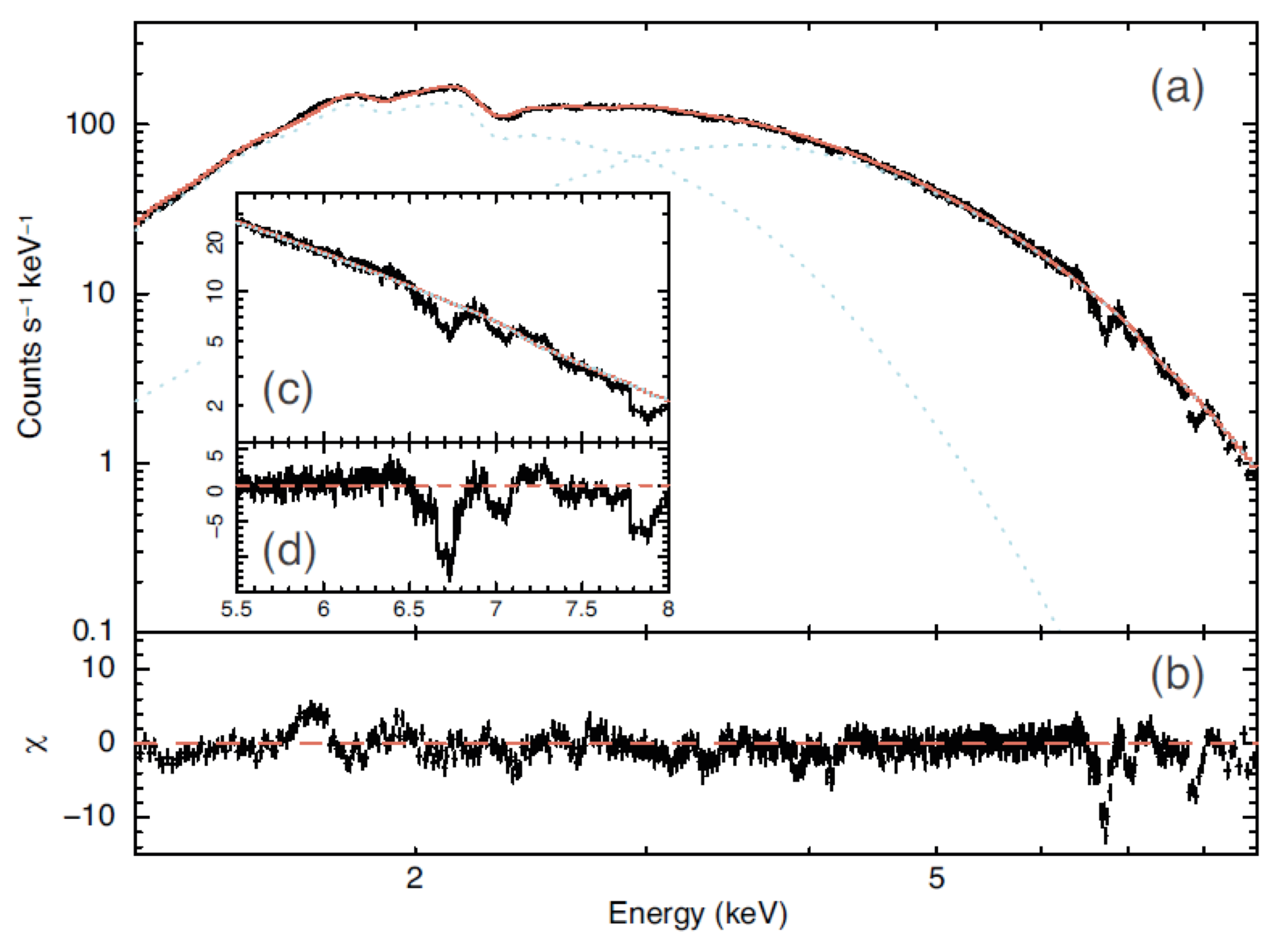NICER / ISS Science Nugget for December 20, 2018Brightening in Circinus X-1 reveals outflowing windMany X-ray telescopes have observed a peculiar source discovered in 1969 by a sounding rocket, Circinus X-1, which consists of a neutron star and a low-mass star in an eccentric 16.9 day orbit viewed edge-on. Recently, Cir X-1 was revealed to be one of the youngest known X-ray binary systems. This past July, NICER triggered observations of Cir X-1 after the MAXI instrument on the ISS reported a re-brightening of the source. NICER detected a remarkable spectrum (see figure) that clearly shows absorption line features.
This suggests that the source of X-rays – the innermost part of the accretion disk or the neutron star itself – is shining through an outflowing wind leaving the vicinity of the neutron star. By contrast, past observations obtained during quiescent, non-flaring states of Cir X-1 showed spectra with emission lines, which are apparently suppressed in the neutron star's flaring state. These spectral features are a useful probe of early-stage mass accretion processes onto young, potentially highly magnetized, neutron stars. NICER
|



